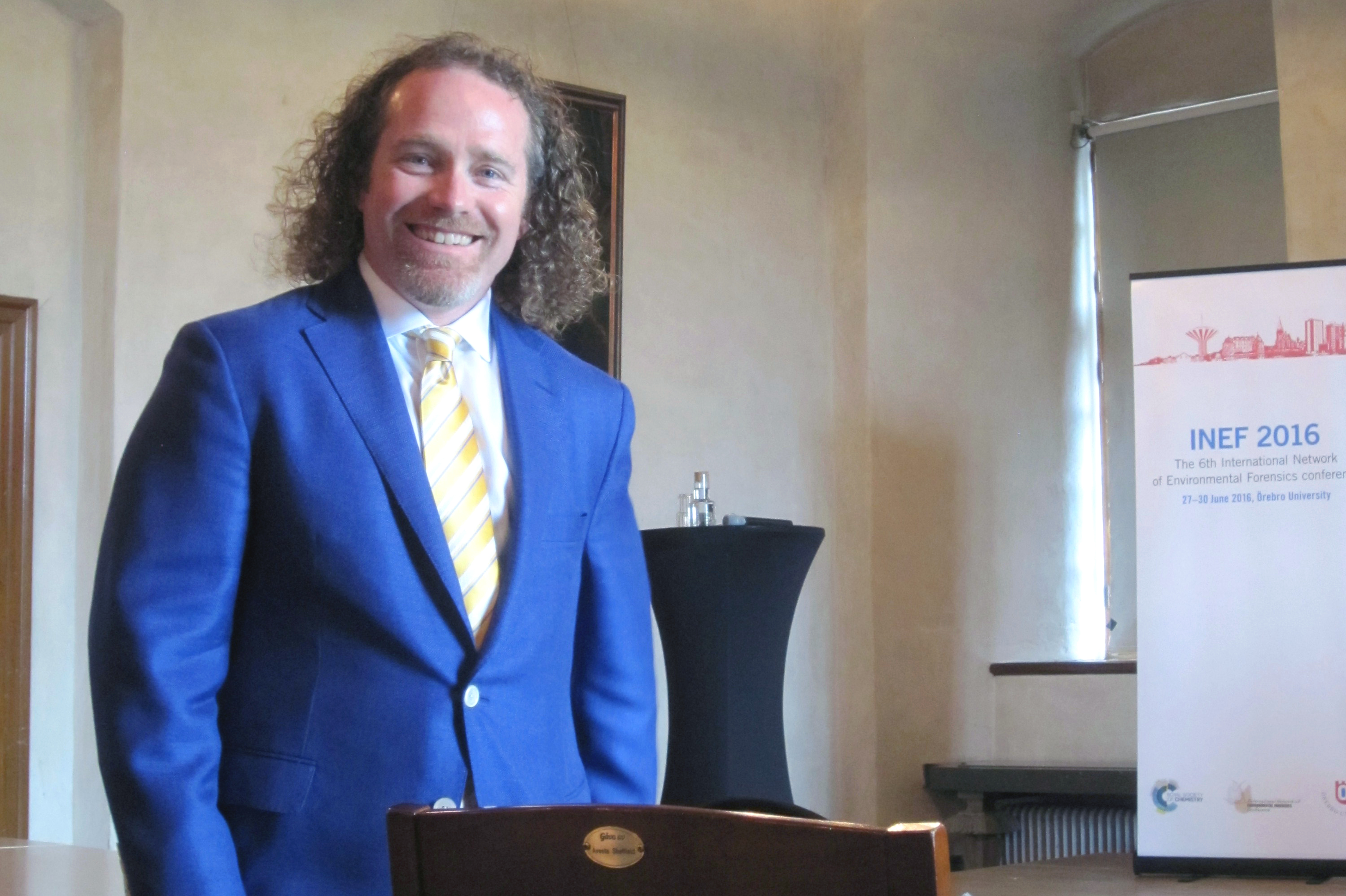
Court Sandau visited Örebro, Sweden for the INEF conference where he presented "Environmental Forensics – Maybe it should be more complicated"
- Date: June 27 - 30, 2016
- Location: Örebro University (Fakultetsgatan 1, 702 81 Örebro, Sweden) + Google Map
Court Sandau visited Örebro, Sweden for the INEF conference on June 27-30, 2016. Court was on stage for the final plenary lecture of the conference.
Event Images
Abstract
“Environmental Forensics – Maybe it should be more complicated”
Forensics is derived from latin “forens”, meaning of, belonging to the forum, public. Therefore…
Environmental forensics – determining identity, source, or timing of contaminant release for the purpose of public communication and/or litigation.
Environmental forensics investigations are generally restricted to data collected as part of environmental assessments, environmental monitoring, risk assessments, delineation studies or remedial work. Environmental data for these programs are based on regulatory requirements for the jurisdiction where the work is being conducted. This severely limits the amount and type of data that is being collected on the contaminants being investigated. For example, two of the more common chemical mixtures assessed in EFIs are polycyclic aromatic hydrocarbons (PAHs) and polychlorinated dibenzo-p-dioxins and polychlorinated dibenzofurans (PCDD/Fs).
The short list of PAHs was developed in 1978 by the US EPA and includes 16 priority PAHs. This continues to be the most common list of PAHs used in EFIs 40 years later even though 100s of PAHs are present in most samples and the analytical chemistry to measure all PAHs is available. For PCDD/Fs, only the toxic 2378 substituted congeners (17 congeners) are reported as individual concentrations. For the forensic chemist, this can be extremely frustrating since the other 193 congeners are actually measured by the laboratory but simply reported in the sum homologues of PCDD/Fs.
EFIs can benefit from the use of extensive chemical lists (non targeted analyses) coupled with multi variable statistical analysis techniques to fingerprint different sources of chemicals and chemical mixtures for the systems being studied.
This presentation looked back at where comprehensive analysis of contaminant mixtures was simplified for regulatory purposes using PAHs and PCDD/Fs as examples and case studies. The presentation then discusses how environmental forensic scientists will be expanding their lists of compounds measured and analyzed in ways to support their investigation. Environmental forensics continues to grow in popularity and will continue to evolve into an investigation that is not limited to just litigious matters, but as a way to demonstrate sound science to the public and concerned stakeholders.
Dr. Court Sandau’s perspective and talk were the most interesting part of tonight’s discussion.
TELUS Spark Science Centre, Calgary
About the Conference
Founded in 2008, the International Network of Environmental Forensics (INEF) aims to provide a forum for those interested in the use of environmental forensics. Since 2009, INEF has held a conference for scientists, environmental consultants, regulators and lawyers to share ideas and research that relate to environmental forensics. This year, in 2016, the 6th INEF conference was held in Örebro, Sweden.

 Provides expert support to projects involving litigious or contentious subjects. These expert witness services are founded on chemistry principles and proper application of scientific methods.
Provides expert support to projects involving litigious or contentious subjects. These expert witness services are founded on chemistry principles and proper application of scientific methods. 



